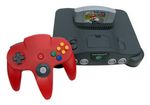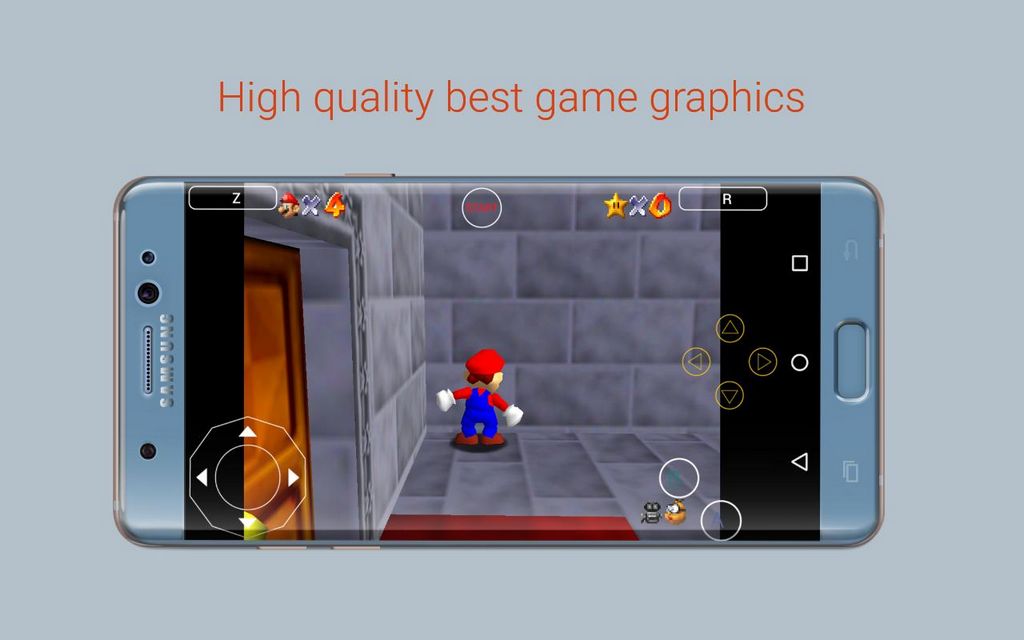It stands as an unique and spectacular console also by today’s criteria. Both from a technological as well as social perspective, it was just stupendous. This short article showcases the background of the Nintendo 64 in addition to explores it from a technical point ofview. If you resemble me, you likely have fond memories of this console. If you want the technical bits, avoid in advance to the design.
To set the stage, the N64 was first released in Japan in 1996. When you think of the 1990’s you might consider the pocket-sized Gameboy shade with Pokmon Red and Blue. But in reality, the Gameboy color really did not appear till 1998, two years after the N64 came out.
The Gameboy at the time was the remarkably big and hefty, Gameboy. With a grayscale screen and packed with 4 AA batteries, it was a brick of a video gaming experience. The Gameboy pocket (a somewhat smaller variation of the successful gameboy) had actually appeared in some markets, yet really did not see the same extensive availability as the original Gameboy.More Here roms-download.com At our site
This is to highlight the large insaneness that the Nintendo 64 represented, particularly in the sub $300 cost factor. The idea of a 64 bit console with 3D graphics simply under 6 years after the 16 bit SNES appears reasonable in knowledge but crazy at the time.
Let’s study the systems of itself. It has a couple of peculiarities. You have actually most likely seen the rickety form of the controller(and most likely if you read this, you utilized it). It often really felt that you required 3 hands to really appropriately make use of the all the buttons.
You’ll see it has an analog stick. This was the initial business video game with an analog stick as its key input system. The D-Pad had been the defacto requirement for decades and Nintendo directly had a great deal of excellent modern technology and experience with making 8-way D-Pads.
An entertaining story from one LucasArts designer is that only specific members of the development group were enabled to know what the controller resembled. So they needed to be kept in a card box with openings cut in so you might get to within and take care of the controller. The common joke on the designer group is that the controller was a bowl of telepathic water you stuck your hand right into, however certainly, you had to think in Japanese.
Along with the spear like form, the control stick had on its face sharp, raised circular ridges that if played too hard, can leave marks on your thumb or hand. We’ll review the industrial layout and thinking behind the controller later on as soon as we start discussing the technological design of the console itself. Let’s speak about the background of Nintendo as it helps understand a lot of their decisions. This section will be quite quickly.
Nintendo was founded in 1889 as a Hanafuda (花札) manufacture. Hanafuda are a type of playing card. After Japan shut all contact with the western world in 1633, the Federal government outlawed the playing cards that had been presented by the Portuguese in the mid 16th century. It was a 48 card deck with 4 collections and looked relatively similar to the 52 card deck we have today. In feedback to the ban, cards became disguised, usually with flowers.
As the Federal government caught on, they started to ban the brand-new types of the playing cards. Card produces responded by additional obfuscating the cards, come to be more and more fancy as time took place. Actually, to this date, Nintendo still manufactures Hanafuda cards themed with numerous video game IP that they possess. The factor of this intro is that Nintendo has a background of being an underdog, taking their time, and being really protective/secretive concerning what they do.
The turning factor for Nintendo was available in 1956 when they saw the United States. The world’s biggest manufacture of playing cards at the time was headquartered there. The existing CEO (Yamauchi) was shocked to locate the biggest business in their industry headquartered in a tiny dingy workplace above a grocery store. When your largest competitor in your established sector remains in a little workplace, it is a great wakeup telephone call that it may be time to expand to various other markets.
In between 1963 and 1968, they explored. Taxi’s, resorts, immediate noodles, and vacuum cleaners were among several of the items they tried. Nonetheless, regardless of their efforts they found they were only efficient making toys. The 1964 Olympics were in Tokyo, gave a much necessary financial boom. The marketplace for playthings was tight, competitive, and low margin. Digital playthings had higher margins and much less competitors. Nintendo had a behavior of hiring gifted electrical engineers to run their assembly and production lines and those engineers had a behavior of developing innovative solutions for issues on the line.
One specific engineer designed a robot arm as a sort of toy. It was a smart style that made use of what got on hand. Hiroshi Yamauchi, the Chief Executive Officer of Nintendo, came through the factory in 1966 and saw the plaything of what it was. They asked him to create it completely, which became the Ultra Hand and was a huge success. The designer, Gunpei Yokoi, took place to develop the Video game & Watch Series and oversee Donkey Kong, Mario Bros, Metroid, the Virtual Child, to name a few. It was Yokoi who claimed:
The Nintendo way of adjusting innovation is not to seek the cutting-edge yet to use fully grown innovation that can be mass-produced cheaply.
One more one of their very first real hits was the Nintendo Light Beam Weapon, a duck quest like video game. Bear in mind, Pong wasn’t also on the market yet. Nintendo bought up old bowling lanes and made interior capturing galleries with their light guns. This verified to be pricey to keep as it needed area and staff so they determined to concentrate on home gaming consoles and galleries as opposed to running their very own areas. The prominent Mr. Video game & Watch was released in 1981.
The video game market in the USA collapsed in 1983. While the precise reason is somewhat of a secret, Nintendo greatly credited it to an expansion of mediocre quality video games that deteriorated customer trust. Negotiations with Atari to redistribute their home console, the Famicon (or the NES as it would certainly later be understood) had crumbled, Nintendo wasn’t a gamer in the United States market. This left just Sega (one more Japanese firm) and Nintendo as big players in the video game market. Nintendo determined they would not duplicate the error of Atari and various other US based business and concentrate on each game they released having a seal of top quality and approximately their demanding criteria. This trend continued till the later years of the Nintendo button, where bench for access was lowered somewhat.
The Nintendo 64
Now let’s take regarding the N64 itself. One remarkable attribute concerning it is that the N64 was going to have a drive accessory (known as the N64DD). The job was drawn back in the SNES days as Nintendo partnered with another firm to create the disk drive, Sony. Fairly late in the task, Nintendo pulled out for unknown factors. Sony, naturally huffed, determined to proceed the job by themselves, inevitably developing the PlayStation. Nintendo likewise wanted to call it the Ultra 64, which you might see in chip names (NUS or Nintendo Ultra Sixty-four). Konami possessed the copy right of several ultra-like video games (Ultra Football, Ultra Tennis, and so on). Analyzing the ramifications, they rebranded to N64.
Leading up the launch of the N64, Nintendo actually went on the buzz circuit. At the time, a company called Silicon Graphics Inc (SGI), was known as a visual technical powerhouse. For eight years (1995-2002) all the films nominated for an academy award for visual effects had their impacts created on SGI systems. You could think of them as the NVIDIA of their day.
A SGI Onyx system, used for N64 advancement, retailed for around $100,000-250,000 in early 1995
When Nintendo was marketing what the full power of the an SGI system in a home console type aspect with a home console price. This had not been aided by the fact that the demonstrations that Nintendo displayed were made on the incredibly costly Onyx server-class systems. We’ve gotten utilized to unbelievable quantities of computing power being packed into every smaller sized rooms thanks to smartphones and the cloud, however to put it in perspective, this would be like Microsoft hinting that the next Xbox would have the exact same power as an entire Azure shelf.
The Onyx systems visualized over were in fact frequently what was used for N64 development. Actually, one video game studio told a rather amusing story a few years later on at a pc gaming convention about getting a call from the FBI asking why they were buying a number of army course super computer systems. Typically, this system would be used for developing 3d versions, re-topologizing them, building the code, and because the architecture was similar sufficient, even run N64 simulations.
 Nintendo 64: Design and Background |

